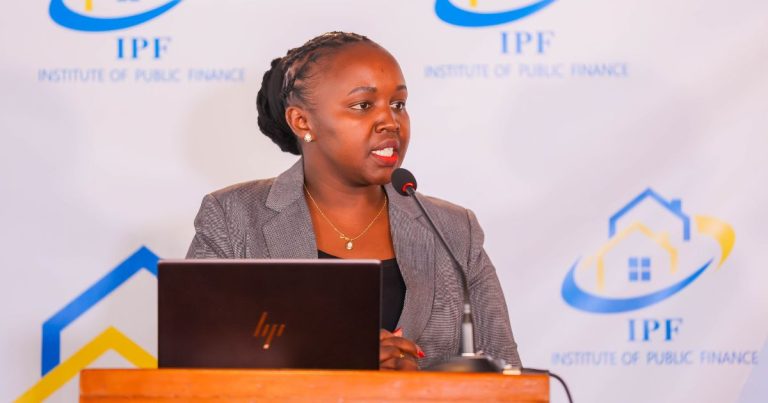Strengthen the Assessment Process for State Owned Enterprises’: Debt Guarantees to Safeguard Kenya’s Fiscal Stability
Introduction
The 2024 Medium Term Debt Management Strategy[i] suggests that contingent liabilities, particularly those arising from debt guarantees to State-Owned Enterprises (SOEs), pose significant fiscal risks. Currently, loan guarantees are issued without sufficient checks to ensure the SOEs receiving them meet criteria that would promote responsible use of these funds. Interestingly, some loans are being guaranteed despite the SOEs being flagged for financial mismanagement and underperformance, this is partly because the existing law lacks a robust mechanism for assessing the eligibility of SOEs for debt guarantees.
To address this, the assessment process should be tightened by considering additional performance indicators of SOEs. These indicators should include, the enterprise’s gross turnover, its profitability, debt default trends, financial mismanagement such as embezzlement of funds and non-financial information such as transparency in procurement.
The Fiscal Impact of SOE Debt Guarantees, and what the Current Law Requires
As of June 2023, the total publicly guaranteed debt had accumulated to Ksh 170 billion, comprising for just three SOEs -KENGEN, KPA, and KQ i. To put this into perspective, the debt of these SOEs exceeds the Fiscal Year 2024/2025 budgetary allocations for the State Departments for Medical Services, Public Health and Professional Standards, and Agriculture combined[ii]. This guaranteed debt represented roughly 10 percent of the Ksh 1.6 trillion increase in total debt during the FY 2022/23[iii]. Notably, during the FY 2023/24, the guaranteed debt owed by KQ, amounting to Ksh 88 billion, was fully assumed by the National Treasury, making taxpayers responsible for the burden [iv]. However, prior to these guarantees, reports from the Ethics and Anti-Corruption Commission (EACC) highlighted significant financial mismanagement and a lack of transparency at KPA[v], while audit reports revealed significant losses at KQ[vi]. This underscores a flaw in the qualifications used to assess an SOE’s eligibility for debt guarantees.
What does the current law require? The National Government Loans Guarantee Act (2011) states that a loan should finance capital projects, the borrower must be capable of repaying the loan, and their financial position must be satisfactory in the medium term [vii]. However, the law fails to distinguish between SOEs facing temporary financial difficulties, where a guarantee could help improve medium-term sustainability, and those with persistent financial challenges, where a guarantee would not be effective.
Additionally, the Act does not specify the financial and non-financial information needed to assess eligibility for guarantees, nor does it address how to handle entities flagged for financial mismanagement, such as embezzlement of funds.
Recommendations for Strengthening the Legal Framework
To address this challenge, the National Government Loans Guarantee Act should be strengthened by establishing clear and stringent financial and non-financial qualifications. Key financial metrics should include analysing the SOE’s gross turnover and profitability to identify unprofitable activities that may be hidden. Debt guarantees should not be granted to SOEs with persistent structural financial challenges, where previous debt financing has failed to generate enough revenue to cover debt service obligations or improve financial performance. Similarly, guarantees should be denied to SOEs flagged for fund misuse or fraud. Guarantees should primarily support industrial growth and innovation rather than resolving liquidity problems.
Finally, the criteria should also include an evaluation of non-financial indicators, such as procurement policies and transparency in reporting. For example, do firms use open tendering to ensure value for money? If guarantees are used to advance industrial policy, they must also be tied to targets associated with enhanced market share or job creation.
Conclusion
SOE debt guarantees currently pose a risk to the budget without a clear return. Kenya is providing loan guarantees to public entities without clear criteria, many of which are also dealing with financial mismanagement and underperformance. As a result, the guaranteed debt by June 2023 accounted for about 10 percent of the Ksh 1.6 trillion debt increase in FY 2022/23. Therefore, the Institute of Public Finance recommends establishing a robust legal assessment mechanism to exclude unqualified SOEs from receiving guarantees and to protect Kenya’s fiscal stability.
Written by Charles Gichu, Research Assistant Macro and Debt Unit
[i] 2024 Medium Term Debt Management Strategy link
[ii] Supplementary Estimates 1 for FY2024/2025 PBB link
[iii] Annual public debt management report for financial year 2022/2023 link
[iv] Report on consolidated fund services expenditures: supplementary estimates II- FY 2023/24 & Budget Estimates- FY 2024/25 link
[v] Report of Activities and Financial Statements for the FY 2013/2014 for the EACC link
[vi] Kenya Airways Annual Report and Financial Statements 2017 link













